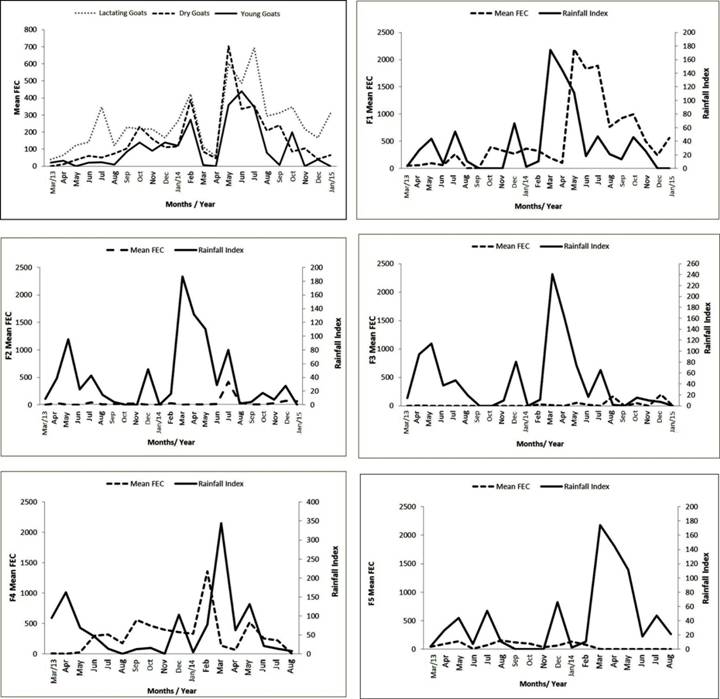ABSTRACT:
This study aimed to determine control measures for gastrointestinal nematodes in goats in the northeastern semiarid after analyzing the dynamics of gastrointestinal helminths during the drought, the evolution of the parasitic load after the first rains and the differences in susceptibility between goats of different categories and ages. Five farms were studied from March 2013 to January 2015. Feces were collected from all goats every month, for fecal egg counts (FECs). No treatment was required on any farm during the dry period. In 2013, with annual rainfall of 265-533 mm, treatments were not necessary during the rainy season. However, in 2014, with rainfall of 604-778 mm, treatments were necessary 60-90 days, after the first rains. On three farms, gastrointestinal nematodes showed multiple anthelmintic resistance. The FECs from lactating goats were significantly higher than from dry and young goats. In conclusion, in the Brazilian semi-arid region (Caatinga biome), it is generally unnecessary to treat grazing goats during the dry season. In the rainy season, the parasite load increases 2-3 months after the first rains. In both, the dry and the rainy season, farmers should monitor their herds by means of FEC or another criterion (anemia or submandibular edema), to determine the need to treat.
Key words:
anthelmintic treatmen; dairy goats; gastrointestinal nematodes

 Thumbnail
Thumbnail
